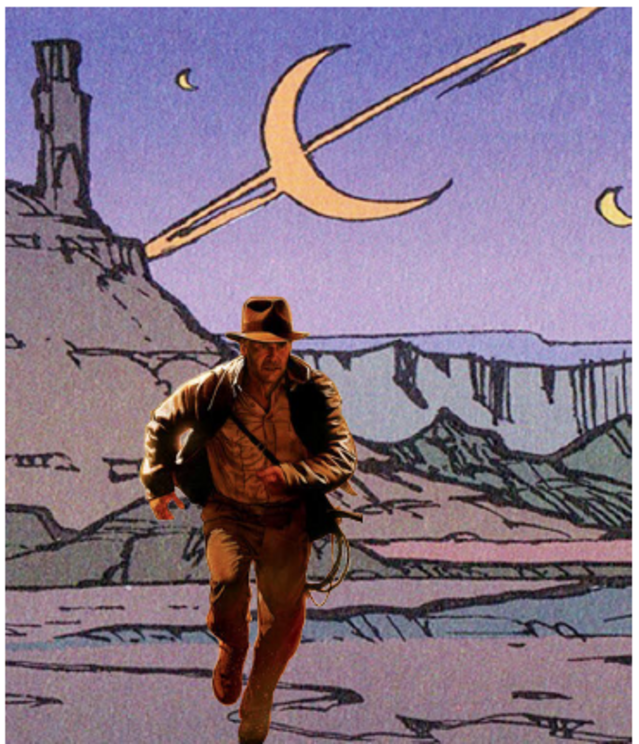Archaeology on alien planets
Dr. James Benford is a PhD physicist who runs Microwave Sciences out of Lafayette, California. He normally focuses on finding novel applications for high powered energies, but sometimes he suggests new ways to look for aliens. He has a history of advancing alternative methods to help with the search — developing a theory in 2010 with his twin-brother, Gregory (a PhD in astrophysics), that essentially accused the multi-million dollar institute Searching for ExtraTerrestial Intelligence (SETI) of doing it all wrong.
His idea regarding selective ‘Benford beacons’ holds that alien civilizations wouldn’t haphazardly transmit continuous signals of their existence across the universe. Instead, they’d be more discriminating and choose to aim narrowly directed pulses at strategic areas of space — signals SETI wasn’t set up to detect.
Even though they gave him a sympathetic ear and room to present at professional gatherings, the Institute hasn’t re-tuned their equipment to listen for Benford’s brief bursts.
Undeterred, the physicist has been refining his thoughts on another concept that involves turning the search closer to home. In a 2019 paper (“Looking for Lurkers: Co-orbiters as SETI Observables”) he proposed that an advanced race of ETs might elect to deploy “monitoring devices on or near the worlds of other evolving species to track their progress.” These robotic lookouts would only reveal themselves to a developing society “once that race had reached a certain technological threshold.”
Probes have an inherent advantage over fleeting radio broadcasts: they allow for an extended reconnaissance period of a target planet. Even if the “Lurker” is centuries or millennia-old, its physical remains might also be visible long after they power down. In other words, SETI’s approach of scanning the galaxy for technosignatures — traces of radio waves or other signs of ET technology — should be scrapped in favor of the hunt for ancient alien artifacts within our solar system. This concept is known as SETA (Search for Extraterrestrial Artifacts).
Most large planetary bodies are surrounded by co-orbiters — quasi-satellites, asteroids and other space objects that get caught in an unstable trajectory. Earth has more than a few of these companions, and it's there that Benford suggests alien “Lurkers” might be hiding. He advocates for manned-missions to explore any accessible near-Earth objects — with the asteroid known as 2016 HO3 identified as a prime candidate. It closely shares Earth’s orbit around the Sun and offers an ideal vantage point for extraterrestrial observers to watch our planet.
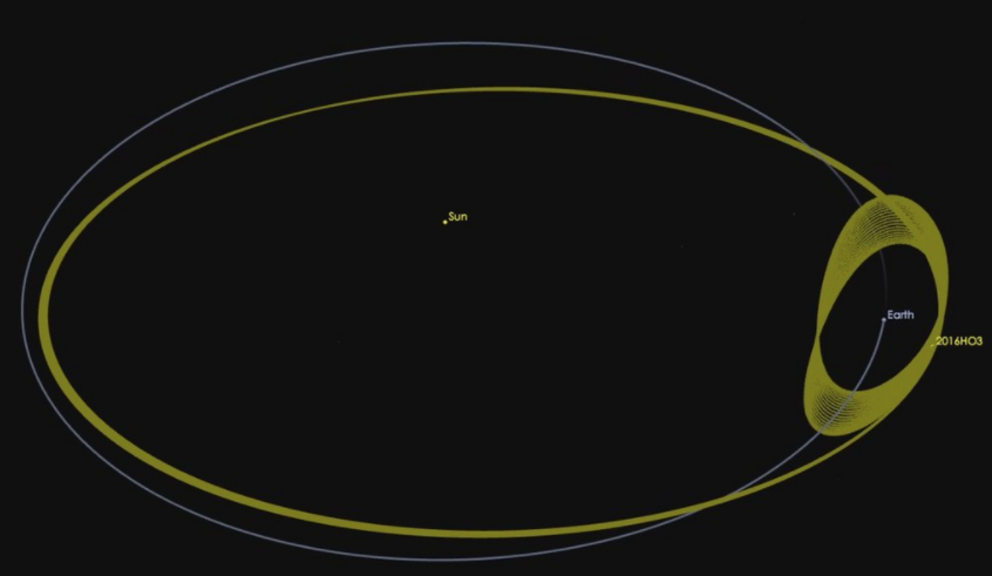
A great place to lurk! Asteroid 2016 HO3 has an orbit around the sun that keeps it as a constant companion of Earth. It’s a recent addition, having slotted into orbit only a century ago. NASA calculations project it will stick around our vicinity for centuries to come. Credit: NASA/JPL-Caltech
A one-way flight to the ‘mini-moon’ would take astronauts approximately 115 days, but the endeavor is surprisingly feasible. China is preparing an unmanned trip to 2016 HO3 before the end of this decade. Benford believes the risk is worth the potential pay-off: “Perhaps probes are waiting on these objects, listening to us, and waiting for us to find them. They may remain silent and simply report back to wherever they communicate to.”
In March of this year, Dr. Benford authored a piece for the peer-reviewed journal, Astrobiology (“A Drake Equation for Alien Artifacts”) that he hopes will strengthen the argument for his crusade. He goes through a reworking of the famous Drake Equation — the “formula” that attempts to estimate the number of alien societies capable of transmitting a detectable signal. The equation is often used to justify SETI’s passive approach of simply listening for interstellar technosignatures — a strategy that Benford reminds us has “thus far found no artificial signals of technological origin.” In contrast, the tentative conclusions reached in his latest paper convincingly show that a SETA-centric approach could “increase the chance of contact.”
The idea that we should investigate the solar system for extraterrestrial relics fits into the framework of xenology — a nascent, proto-scientific area of research best described as “alien studies.”
Benford sees the hunt for ET artifacts as “a strategy of ETI archeology.” Distinct from the field of astrobiology, which concerns itself with the discovery of living organisms elsewhere in the cosmos, xenoarchaeology (also known as exoarchaeology) seeks to understand another planet’s culture and history by studying the physical artifacts left behind. Much like terrestrial archaeologists who recreate humanity’s past by analyzing the remains, their outer space counterparts need a unique set of skills to properly inspect and interpret any surviving fragments of an ancient extraterrestrial civilization.
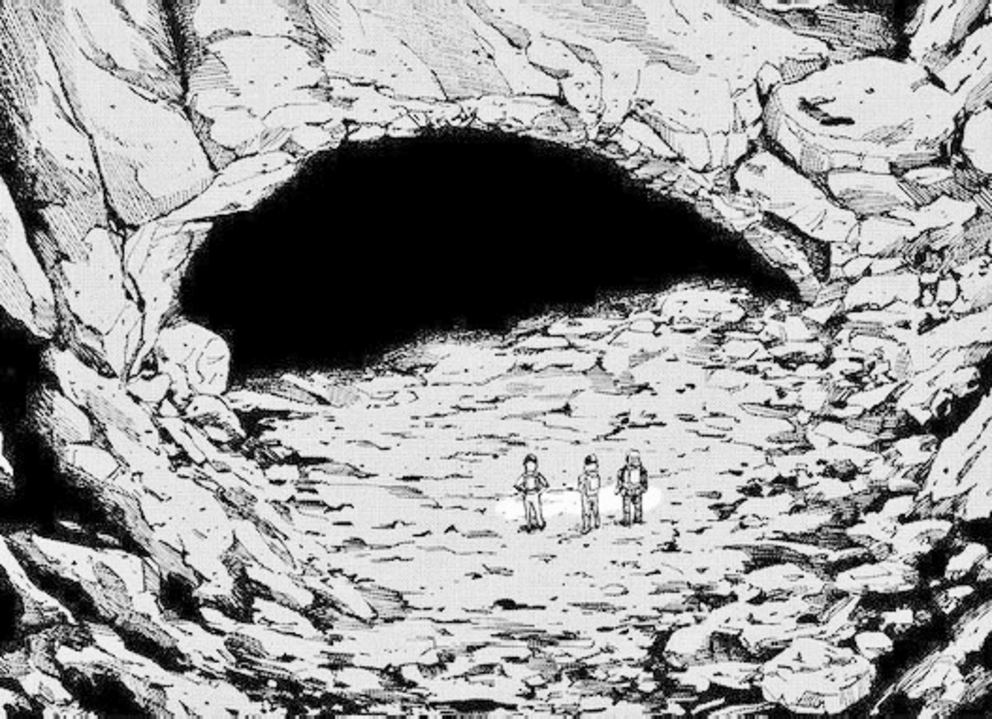
Future space missions to near-Earth objects and planets could reveal alien "Lurker" probes already in our solar system. Some scientists are advocating for a change in SETI policy to focus its limited resources on the search for physical ET artifacts.
Startlingly, Benford’s analysis reveals that there are millions of detailed lunar photographs within a resolution of 3 feet that have gone unstudied. The same is true for an abundance of pictures taken of Mars. He smartly suggests that imaging software should be created to intelligently scan the photos for signs of potential artifacts or unnatural formations.
Analyzing off-world images for surface anomalies has traditionally been the domain of a small but vocal contingent of fringe investigators. Researchers like Richard C. Hoagland and Mark Carlotto cut their teeth scrutinizing print-outs from the Voyager orbiters that took pictures of Mars in 1976. The images appeared to reveal a wealth of curious construction and fabricated features across the Martian landscape. Most of these landforms are concentrated in Mars’ northern hemisphere in an area known as Cydonia — the holy grail of exploration for future xenoarchaeologists. Situated on the shoreline of an ancient, long-dry ocean, researchers have documented what they believe to be five-sided pyramids, manufactured mounds and a mile-wide statue resembling a human face, among other geometrically significant arrangements. They argue that these formations aren’t the result of random geology, but the remains of artificial structures.
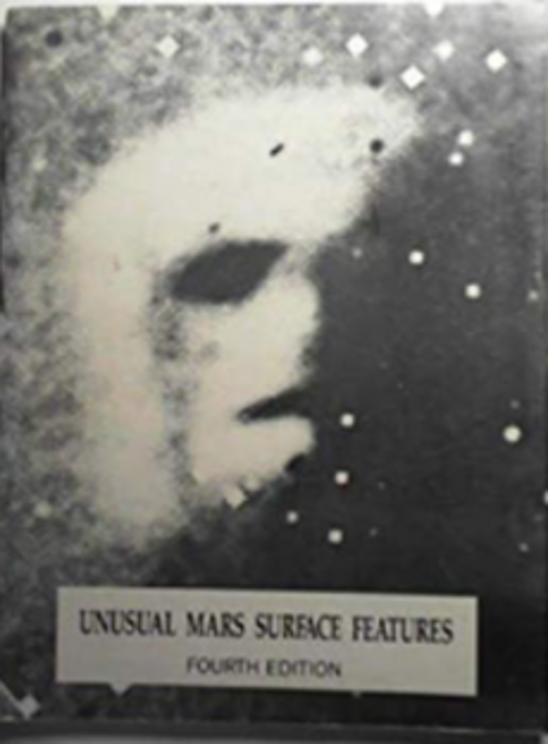
A book published in the late 1980s by Vincent DiPietro and friends from the Society for Planetary SETI Research (SPSR) was one of the first to scrutinize structural anomalies on Mars.
Others take the ‘ruins on Mars’ speculation further. Dr. John Brandenburg contends that isotopic evidence proves an advanced culture existed on a habitable Mars in the distant past. By analyzing the levels of trace elements found in Martian meteorites and debris, he theorizes that a nuclear-armageddon was responsible for eradicating all signs of life and turning the planet into a barren rock. Brandenburg is all-in on his hypothesis: “We must immediately send astronauts to Mars to maximize our knowledge of what happened there, and learn how to avoid Mars’ fate.”

Where have all the Martians gone? Dr. Brandenburg suggests a nuclear explosion was to blame for their extinction.
Clearer images of the Cydonia ‘complex’ taken by NASA and the European Space Agency (ESA) since 1976 have eroded much of the mystery surrounding “The Face,” but additional strange formations remain unexamined.
Perhaps the outpouring of rovers and orbiters sent to Mars in the past 12 months will yield further xenoarchaeological implications. NASA currently has two operational rovers and a helicopter on the dusty planet. This follows their previous three Mars missions that included surface exploration vehicles. China successfully landed their first rover (Zhurong) on Martian soil in May 2021, and the United Arab Emirates’ Hope spacecraft is also circling the planet, loaded with a bevvy of scientific instrumentation and high-resolution cameras at the ready. There is clearly a renewed effort to scour the sands of the Red Planet.
What does Dr. Benford think about the presence of alien relics on our Moon or Mars? While he feels confident that “nothing has been seen except our own artifacts we sent there,” a growing chorus of technical analysts and researchers disagree. Even the famous astronomer Carl Sagan pondered on physical remains that might await us in the universe: “It is not out of the question that artifacts of these visits still exist, or even that some kind of base is maintained (possibly automatically) within the solar system.” Until future xenoarchaeologists are able to dust rocks in outer space, the debate over the existence of artificial structures within our solar system will likely continue.
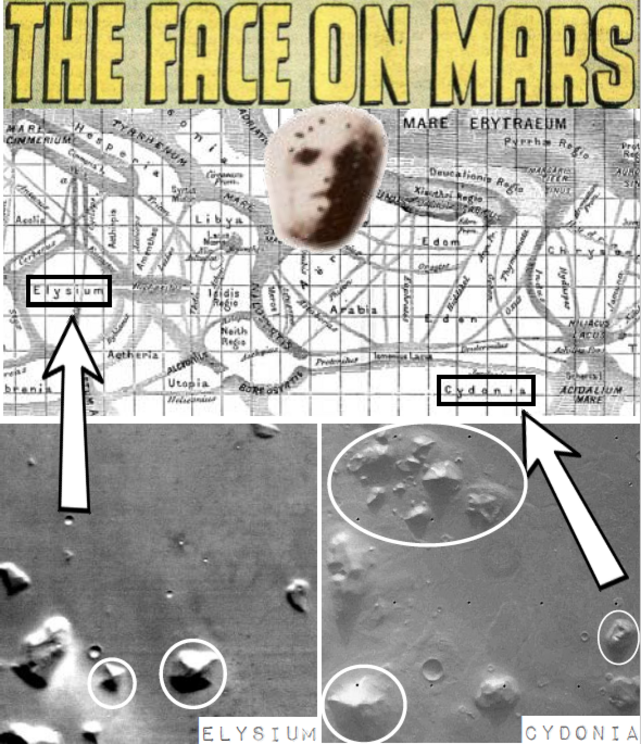
Elysium: In 1971 the Mariner 9 spacecraft circled Mars and sent thousands of low-res images of the Red Planet back to Earth. On the vast plains of a region known as Elysium, odd landforms resembling pyramids were detected. These organized shapes stood out against the endless expanse of sand and caught the eye of astronomer Carl Sagan.
In the series Cosmos, he describes the “Pyramids of Elysium” as “one of the strangest features on Mars.” He speculated that they may simply be “mountains carved by the fierce winds,” while also leaving open the possibility that “perhaps... they're something else.”
The Elysium plateau's name is a reference to the “Elysian Fields” of Greek legend. This “abode of the blessed” was the place where mythical heroes and gods went in the afterlife.
Cydonia: The Cydonia Complex is seen in this picture taken by the Viking 1 orbiter in 1976. “The Face” is situated in the bottom right corner. Circled in the bottom left is the five-sided “D&M Pyramid,” originally studied by Vincent DiPietro and Gregory Molenaar. The pentagonal structure shows signs of geometric precision and purposeful alignment with other enigmatic features on the Martian landscape. Attempts to explain its creation by natural processes have been unsuccessful.
The ancient shorelines of Cydonia also seem to show the ruins of a city. Researchers of these surface anomalies cite the presence of small, artificial mounds that look to be arranged in a deliberate pattern. Monuments on Mars (1987), by Richard C. Hoagland, compiles most of the early image analysis of curious Martian landforms.

